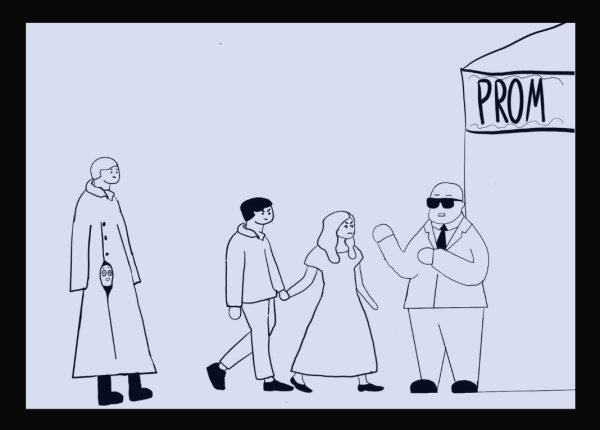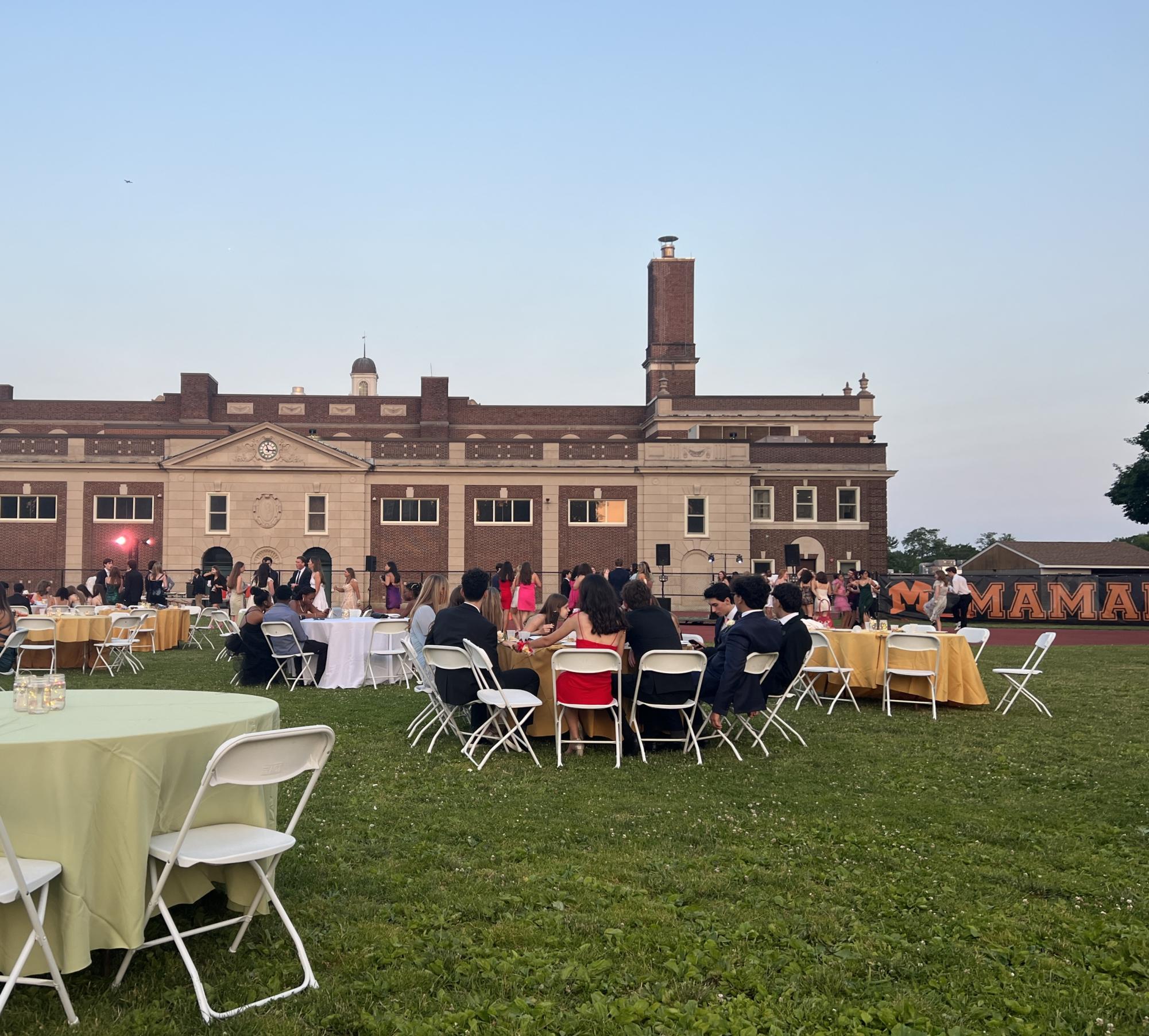As a long year of especially hard work and collective stress among eleventh-grade students culminates at Mamaroneck High School (MHS), one highly-anticipated event ushers in excitement, celebration and widespread enthusiasm: Junior Prom. A well-known and beloved tradition that has characterized coming-of-age movies and high school highlight reels for decades, prom is celebrated in Mamaroneck for both the junior and senior classes. Still, for the juniors, the excitement that surrounds the dance is somewhat limited. As it stands, MHS has a longstanding policy that prohibits eleventh-grade prom attendees from bringing a date who attends another school, while seniors are free to escort to the dance whomever they please.

The inconsistency of the policy itself, with a gap of privileges between juniors and seniors, raises a key question: is this rule made with the assumption that Mamaroneck seniors are ‘more mature’ or ‘more deserving’ than juniors? I, for one, would posit that many students would deny this accusation. “We’re both upperclassmen,” notes Chloe Blaufeux (’25). “We’re both responsible; we’re both on the same type of maturity level; we’re both older parts of the school… .I don’t see much of a difference in maturity between junior and senior year.” While it can be acknowledged that bringing extraneous high school students to a MHS-sponsored event could warrant some hesitation from administrators- extra forms to keep track of and extra students to supervise are difficult to manage- the inconsistency in policy between eleventh and twelfth graders is less understandable. In fact, the success of previous senior classes in maintaining responsibility and safety while bringing non-MHS dates to prom should serve as an indicator that doing so is achievable for all upperclassmen.
Interestingly, before the COVID-19 pandemic, the junior and senior proms were quite similar; both took place at a separate venue, and both allowed outside students in. However, in 2020, “the prom… and everything else was shut down,” attested assistant principal Matthew Alonge. The redemption of the senior prom occurred on the baseball field to meet COVID restrictions, and people enjoyed the more casual atmosphere that the location and camaraderie engendered. Thus, former administrators at the time reasoned that for future years “they could keep the senior prom a big, formal event…and the junior prom could be less fancy, just a more casual gathering of the class,” Alonge added. “This way, it wouldn’t be the same event two years in a row.” Still, I would venture to argue that while the rule might have made sense while “guidelines were constantly changing” in the COVID era, many juniors would avoid much unnecessary fretting over dates were they able to escort a person of their choosing. Additionally, allowing other students in would not be a limitation of the casual and less formal environment of the junior prom; each grade at MHS could still enjoy uniquely fun experiences. There are various ways, too, to keep the prom as affordable and limited in size as necessary, including charging higher rates for outside students and even setting a maximum number of non-MHS tickets in order to maintain a class-bonding experience.
The consideration of student safety may be brought up as a justification for the restrictions placed on the junior prom at MHS. Still, with the feasibility and possibly minor effort necessary to expand the so-called ‘J-Prom’ to include non-MHS dates, could improve the prom experience of so many students. Simply requiring pre-registration for non-Mamaroneck high school students, as successfully managed for the seniors, and even simple ID checking at the door would greatly minimize any risk of danger from outside attendees, if it existed at all.
Francesca Krywosa (’25) even pointed out that these non-MHS dates “could just bring their student ID from their school to prove that they are currently a student,” eliminating the possibility of potentially dangerous people gaining entry to the prom. “You know who [the students] are, you can make sure that it’s them, and it would make it a better experience for many students,” Krywosa said. She also mentioned that “same as how we sign permission slips [here at MHS],” the school could get a formal record of the important information of any outside attendees while creating a behavioral contract with the student. With these possible guidelines being so accessible and quite easy to implement, what really would constitute a security threat?
The high school prom is widely considered to be the sparkling zenith of the student experience. “It’s the main event people think about when they think about high school,” reflected Blaufeux. Admittedly a cliche present in various idealized descriptions of high school, it still holds concrete meaning for plenty of students, who value the event as both a celebration of accomplishments and a community-building endeavor. Each related process, from picking out dresses and suits to posing awkwardly while Mom and Dad take zoomed-in photos on their phones, fosters excitement and builds relationships between each respective attending class. However, for those with significant others at other high schools, they face a conundrum: should they attend prom, watching their friends engage in ‘promposals’ and couples photos, or should they miss a landmark event of their high school career? “There’s a lot of people I know that have boyfriends or girlfriends from other schools, or just closer friends that they want to bring… only being able to take people [from MHS] is in some ways exclusive,” Blaufeux mentioned. “The person who they really want to be there with and share that experience with can’t come to the prom… and they should be able to have just as much of a fun experience as [the rest of us] and the seniors.” Allowing outside students could be a very easy change, as it poses no obvious major inconveniences, and yet it would bring a substantial amount of gratification to many of Mamaroneck High School’s first priority: the student body. After all, there’s a reason that people say ‘the more, the merrier’!









